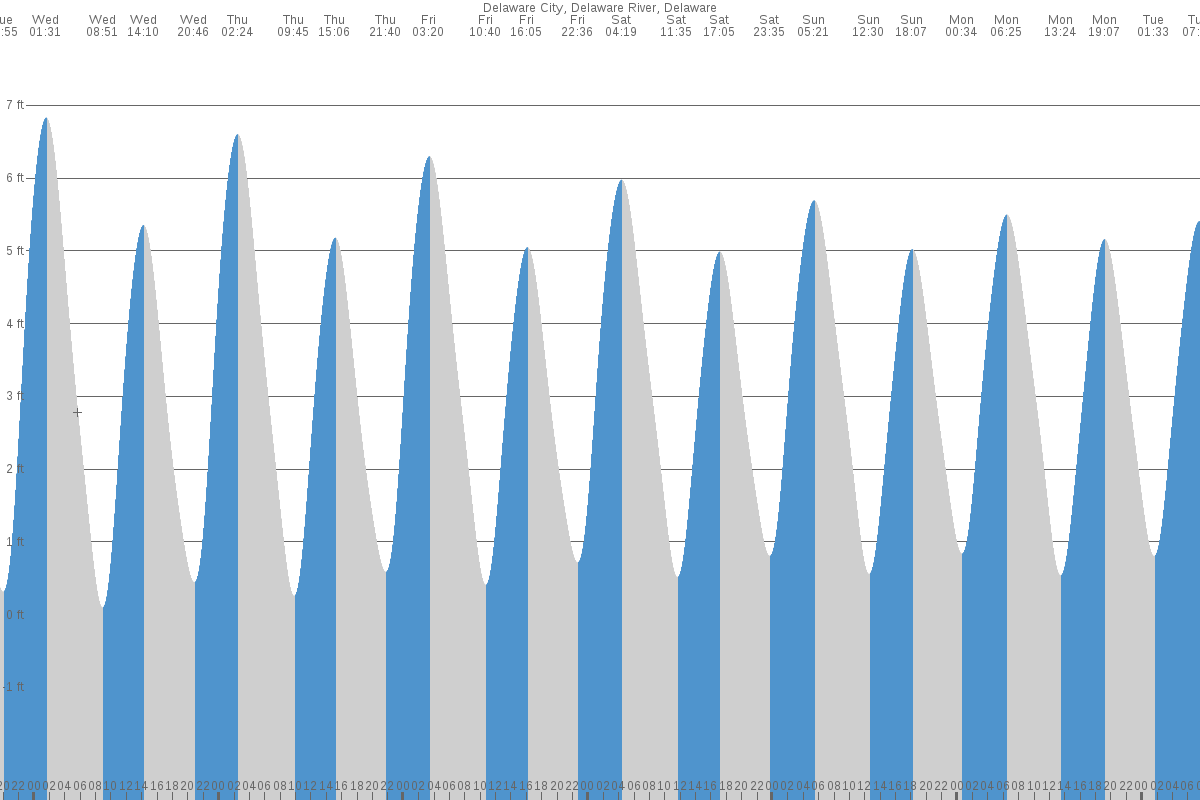

Gauges ignore variations caused by waves with periods shorter than minutes. To make accurate records, tide gauges at fixed stations measure water level over time. Tides vary on timescales ranging from hours to years due to a number of factors, which determine the lunitidal interval. A "mixed tide"-two uneven magnitude tides a day-is a third regular category. Other locations have a diurnal tide-one high and low tide each day. Many shorelines experience semi-diurnal tides-two nearly equal high and low tides each day. They are however only predictions, the actual time and height of the tide is affected by wind and atmospheric pressure. The predictions are influenced by many factors including the alignment of the Sun and Moon, the phase and amplitude of the tide (pattern of tides in the deep ocean), the amphidromic systems of the oceans, and the shape of the coastline and near-shore bathymetry (see Timing). Tide tables can be used for any given locale to find the predicted times and amplitude (or " tidal range").

Tides are the rise and fall of sea levels caused by the combined effects of the gravitational forces exerted by the Moon (and to a much lesser extent, the Sun) and are also caused by the Earth and Moon orbiting one another. Tide coming in, video stops about 1 + 1⁄ 2 hours before high tide

In Maine (U.S.), low tide occurs roughly at moonrise and high tide with a high Moon, corresponding to the simple gravity model of two tidal bulges at most places however, the Moon and tides have a phase shift. Earth's rotation drags the position of the tidal bulge ahead of the position directly under the Moon showing the lag angle. Simplified schematic of only the lunar portion of Earth's tides, showing (exaggerated) high tides at the sublunar point and its antipode for the hypothetical case of an ocean of constant depth without land, and on the assumption that Earth is not rotating otherwise there is a lag angle. coastal stations and some islands in the Pacific and Caribbean, for a time period of up to two years.For other uses, see Tide (disambiguation). You can get tide predictions and tidal current predictions online for U.S. NOAA's annual tide and tidal current tables include predictions for more than 10,000 international locations. This allows each member country to produce annual predictions for locations around the world, in their native language, for use by mariners, shipping industry, and recreational users. Member nations of the International Hydrographic Organization make their annual tide and tidal current predictions publically available. NOAA's Center for Operational Oceanographic Products and Services produce these tide tables on an annual basis. NOAA tide predictions are used by both commercial and recreational mariners for safe navigation. Online predictions are more accurate and up-to-date than what is provided in the annual printed tables. The change from print to online tables allows us to modernize this long-standing product by bringing it into the digital age. NOAA eliminated paper publications of the annual Tide Tables and Tidal Current Tables in 2020. NOAA and its predecessor agencies have been generating tide predictions since the mid-1860s.Īll NOAA tide and tidal current predictions for locations around the nation are available in electronic form online.


 0 kommentar(er)
0 kommentar(er)
